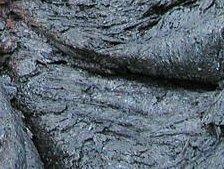
May Editorial
Can Basalt save the World?

May Editorial
Can Basalt save the World?
|
|
Unless you have spent the last twenty years as a hermit (in which case how are you reading this?), you know that the planet is warming up, and one of the main causes of that warming is carbon dioxide (CO2) which traps and holds the heat from the sun. A lot of that CO2 is produced by human activity, especially the burning of fossil fuels extracted from the ground. Therefore, a logical idea is that places like power stations should extract the CO2 in the emissions from burning oil or coal, and put it right back into the ground it came from. That's a good theory, and it even has a name – Carbon Capture and Storage, or CCS. With CCS, carbon is pumped back into the spaces left underground by oil and gas drilling, and safely sequestered from the atmosphere where it causes harm. But – and there's always a 'but' – CCS as it stands has several major problems. Apart from the fact that capturing carbon from factory and power station chimneys is an expensive business, and modern technology can only capture around 24% of the carbon being emitted, the main problem is that CO2 is a gas, and being buoyant, it has a tendency to work its way up through cracks in the rock and back into the atmosphere. Therefore there's a lot of effort put into monitoring current carbon sequestering schemes for leakage, and one pessimistic estimate is that 75% of the gas now stored will eventually leak back out of storage. So there's a lot of excitement around an Icelandic experiment in which 95% of the CO2 emissions from a power plant were stored underground, permanently and with no chance of re-emission. In fact 'storage' is the wrong word here, because the carbon is not stored – it is transformed into rock, and as rock, it is not going anywhere, ever. The secret to this miracle is volcanic basalt. This is not hard to find in Iceland, which is basically made of the stuff. About 25% of basalt by weight is calcium, magnesium and iron oxide. These three materials, and particularly the first two are highly reactive. The Icelandic project to use the basalt to fix carbon is called the CarbFix project. Its researchers mixed carbon captured from the power plant with water – a lot of water, as the carbon makes up only 5% of the total product – and injected it into basalt at a depth of around 800 meters below the surface, where temperatures are around 20-50 centigrade. The underground pressure forces the carbon-water mix into fissures in the porous basalt, where the water acts as a solvent for the minerals and the temperature speeds reactions. The result is that the carbon in the water becomes a part of chalky substances such as calcium carbonate in a very short time. In fact it took just two years for the carbon injected into the Icelandic site to become a mineral with the carbon element fixed underground for a geological time period. A permanent solution, in fact. Sadly, though this solution works, there is a long way to go before it can be a practicable one. For a start, while Iceland has abundant basalt, most of the remainder of the stuff on the surface of the planet is on the ocean beds. Just the mid-Atlantic ridge contains enough basalt to mineralize all the carbon currently in the atmosphere. However, getting the carbon-water mix underground in Iceland is expensive enough – and that is when the power plant concerned is geothermal and produces a minimal amount of carbon which is easy to capture. Getting the carbon from a conventional coal-fired power station and injecting it into the seabed is unfeasibly expensive in most cases. On the other hand, the advantage is that it only has to be done once, and without the expense of being monitored afterwards since the carbon has no chance of escaping back into the atmosphere. It is ironic that the two places with the surface basalt to easily store carbon are two of the lowest carbon-emitting zones on the planet – Iceland and the Pacific North-West in America, where a lot of the power comes from renewable energy already. It is unlikely that the environmentally-conscious inhabitants of these areas will gratefully accept the carbon effluent of the rest of the planet, so the more expensive sea-bed option must be used. In the end the issue comes down to a question of money. Is it more efficient to capture and mineralize the excess carbon in the atmosphere, or to spend that same money mitigating the effects of climate change? Mineralization will never solve the problem on its own. Whether it is possible in individual cases comes down to individual power plants, the amount of waste water available to them, and the proximity to easy basalt storage. For some the economics may be practicable. 'The problem is big enough', remarked one of the scientists involved 'we need many solutions.' Perhaps a carbonated water solution in basalt is indeed one of these. |
| _______________________________ | ||||
| Home | | | Shopping | | | Database |
© Biscuit Software 2004-2015
All rights reserved